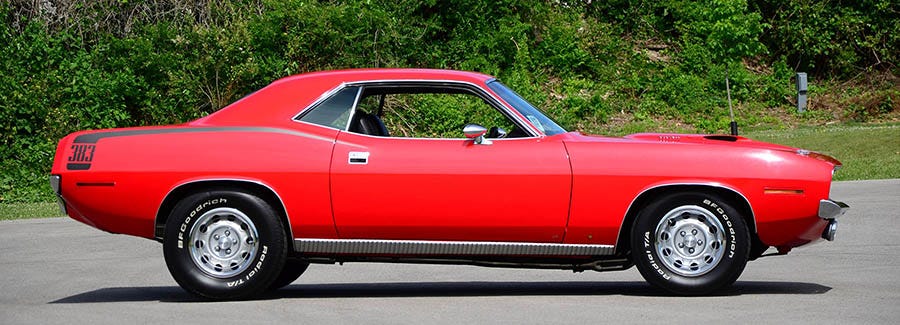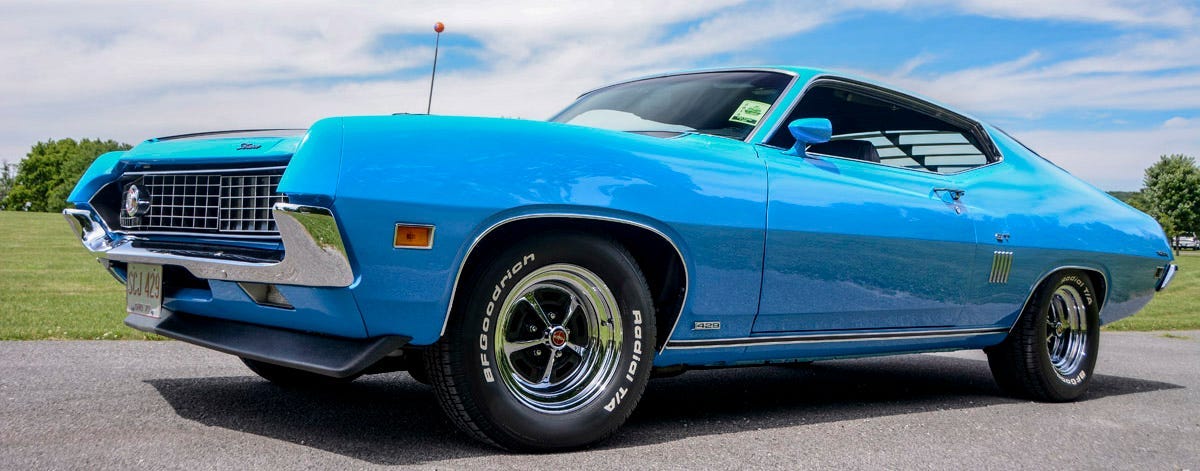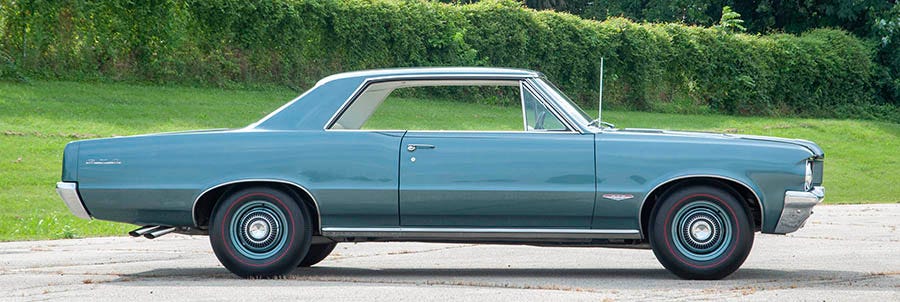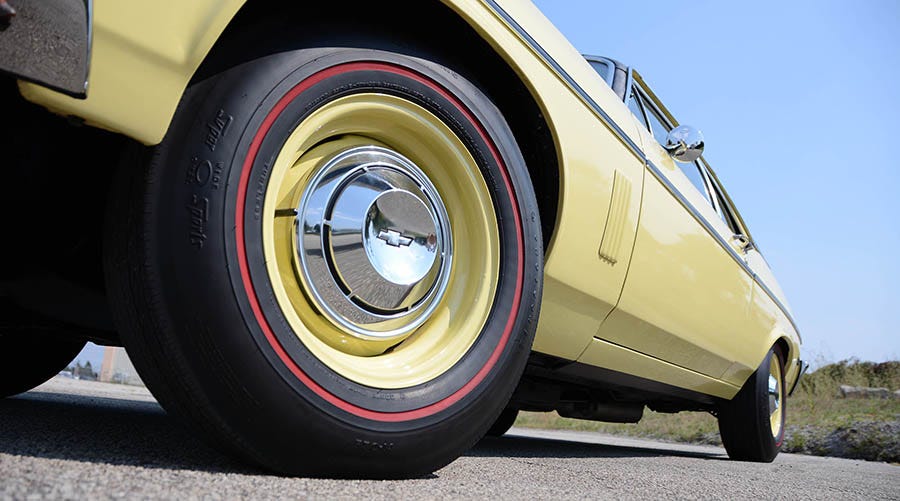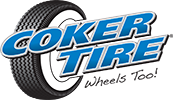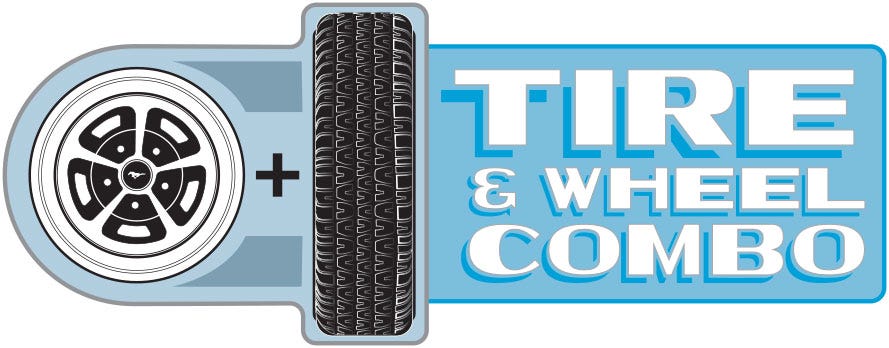Muscle Car Tires | Get the Right Tires for Your American Muscle Car
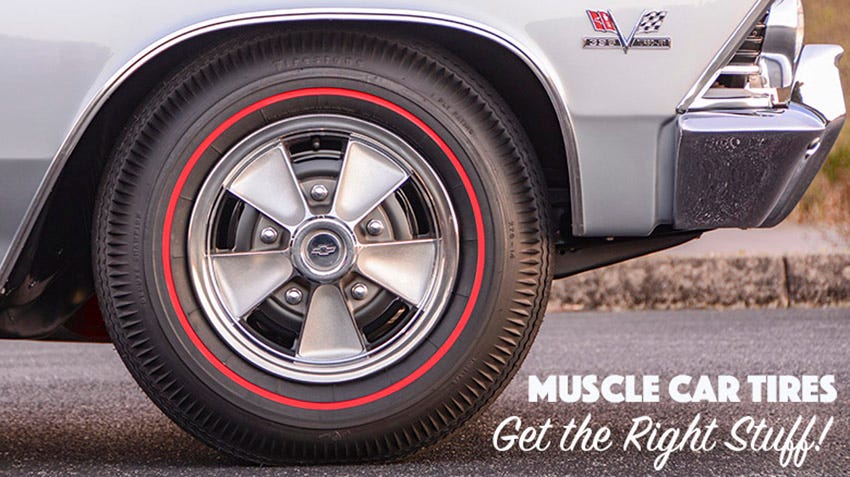

Tires changed drastically during the 10 years that we consider to be the "muscle car era". Therefore, using the term "muscle car tires" covers a pretty broad scope of sizes, sidewall styles and brands. We study tires closely around here, and it helps us to develop new tires for our wide range of customers. We've offered muscle car tires for many years, and we continue to develop and improve the product offering to fill in gaps in the marketplace. Whether you're restoring a car like the 1966 Chevelle in our feature image, or upgrading a muscle car to radial tires, we have products that are excellent options for 1964 through 1974 muscle cars. Keep reading, as we unpack the history of muslce car tires, and what makes them so special.
Narrow Whitewall Tires
Whitewall tires on a muscle car? That just doesn't seem right. Despite what our brains have trained us to remember, millions of muscle cars rolled off the assembly line with WHITEWALL tires. American automobile manufacturers began reducing the size of whitewalls in the early '60s and this trend lasted until the late '60s when it reached the pinstripe width of 3/8-inch. The narrow whitewall gave the cars a more sporty look, but it definitely doesn't have the same wow factor as a special tire like a redline or something with bold raised white letters.


We offer all of the early muscle car sizes, including 750-14, 695-14, 735-14 and more! Later, the sizing stepped up to 775-14 and 775-15, and we have those sized covered, too! Finally, in 1967 many manufacturers began offering alphanumeric tire sizes, including the revolutionary Firestone Wide Oval with 70 series sidewalls. This increased the contact patch and shortened the sidewall for a very aggressive look. F70-14, G70-14 and F70-15 tires were common on muscle cars and Corvettes of the late '60s and early '70s, and yes the Firesotne Wide Oval was available with a pinstripe whitewall! With brands such as BFGoodrich Silvertown, Firestone Deluxe Champion, Firestone Wide Oval and U.S. Royal, these bias ply tires are PERFECT for a by-the-books muscle car restoration.
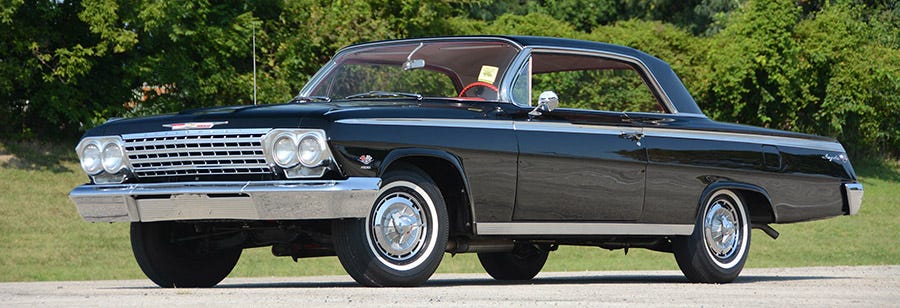

Ok, ok, we realize this 1962 Impala Super Sport is a couple years before the official muscle car era kicked off, but with a 409ci W-motor for power, this thing has plenty of muscle. It also provides a nice example of how the one-inch whitewall tires changed the appearance of classic American cars. This would continue into the mid to late '60s on many mid-size muscle cars.
Special Stripes (Redline, Gold Line, etc.)
Redline tires debuted in 1964 beneath the Pontiac GTO. Specifically, the original redline tire was the U.S. Royal 750-14, seen on the right. This tire jumped out and grabbed the attention of buyers, as it gave them an added level of coolness to go with the ground pounding GTO. It didn't take long for other manufacturers to jump on the band wagon, and by 1966, several makes and models came with these sporty new tires as options. A common size for redline tires is 775-14, which fits Chevelle and several Mopar muscle cars.
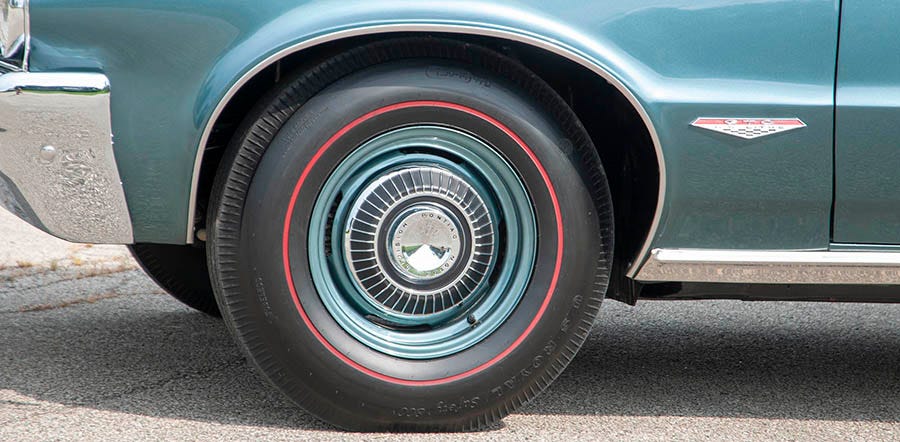

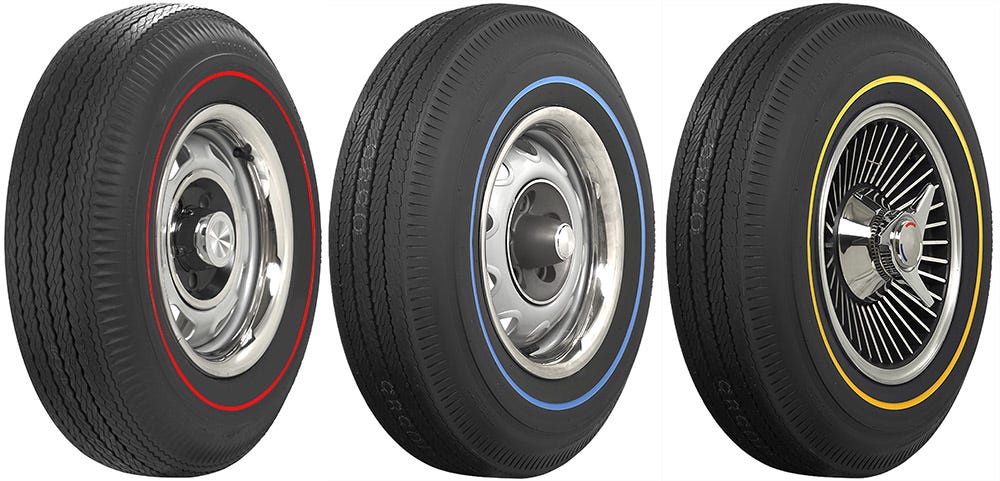

Seeing the impact that redline tires had on muscle car consumers, tire manufactures pushed the boundaries with even more color sidewall treatments. Certain Mopar muscle cars were available with blue line tires, such as the BFGoodrich Silvertown 775-14. Additionally, Chevrolet used gold line tires on mid '60s Corvettes, and also used them on the 1965 Chevelle Z16. The gold and blue line tires never caught on like the redlines, but we offer them for muscle car restoration projects and custom builds.
The redline tire stuck around for a few years, as the muscle car era really blossomed in the late '60s. When the Firestone Wide Oval was introduced in 1967, a 3/8 inch redline was one of its sidewall options. By the 1969 model year, redline and other color stripe tires were on the way out, in favor of a new trend in the market.


This is one of the ultimate muscle cars, a Hemi powered 1969 Plymouth Road Runner, wearing a set of our Firestone Wide Oval F70-15 redline tires and Mopar Standard 15x6 inch wheels. This is a great example of the creative use of colors in the late '60s.
Raised White Letters
Raised white letter tires came to the market when tire manufacturers wanted to emulate the looks of racing tires. By the late '60s, lettering on NASCAR racing tires and Indy racing tires was highly visible, giving the tire manufacturers great representation on track. This look translated well to passenger cars, but the letters were reduced in size to look a little more proportionate. Firestone was one of the first to hit the market with raised white letter tires in its Wide Oval product line. By 1969, raised white letters became factory options on many muscle cars. This look would continue to be popular for well over a decade.
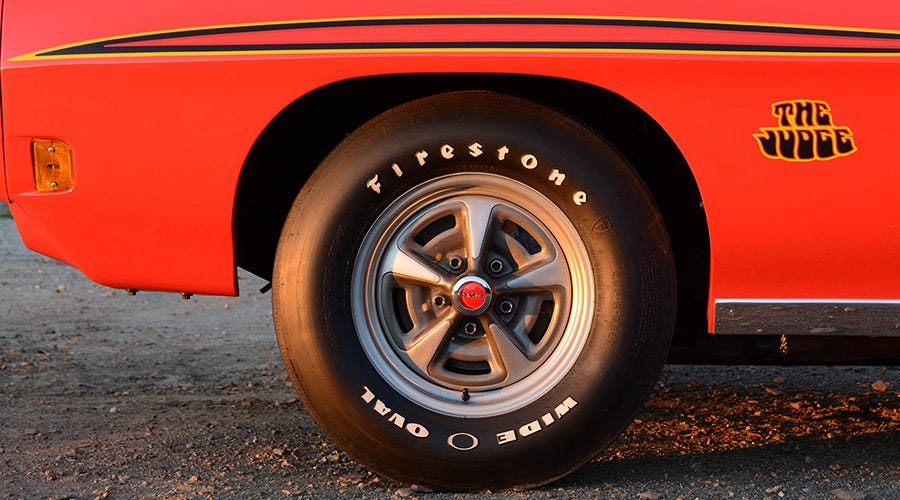

Even though Firestone Wide Oval had a strong grasp on raised white letter tires, BFGoodrich entered the market with a game changing product in 1970. This was the BFGoodrich Radial T/A, a tire that combined the classic look with radial construction. After several generations of sidewall and tread designs, the BFGoodrich Radial T/A is still being produced and it's still one of the most popular muscle car tires on the market. The BFG Radial T/A and our new Firestone Wide Oval Radial offer fitments on thousands of applications. The beauty of the raised white letter tire is that it looks appropriate on cars built well into the 1980s on cars such as the Chevrolet Camaro, Buick Grand National, Ford Mustang and many more.
Muscle Car Gallery


